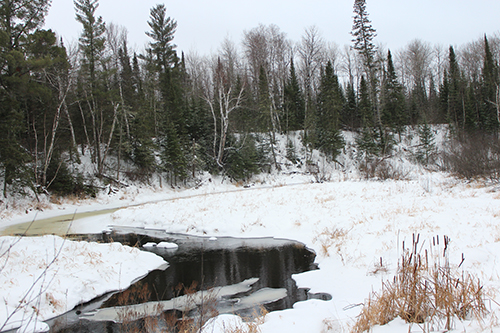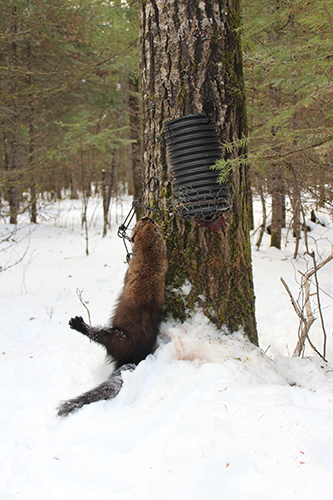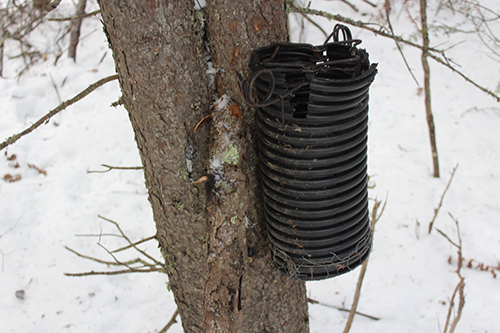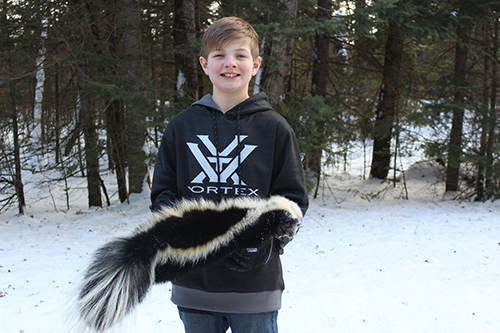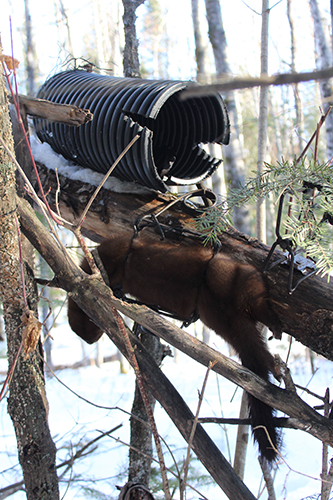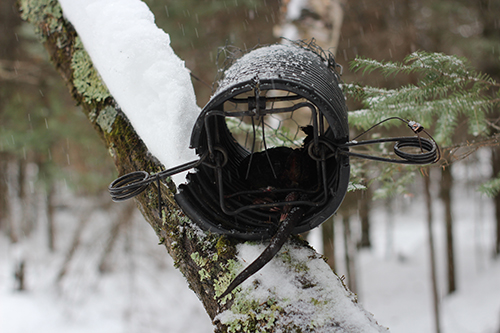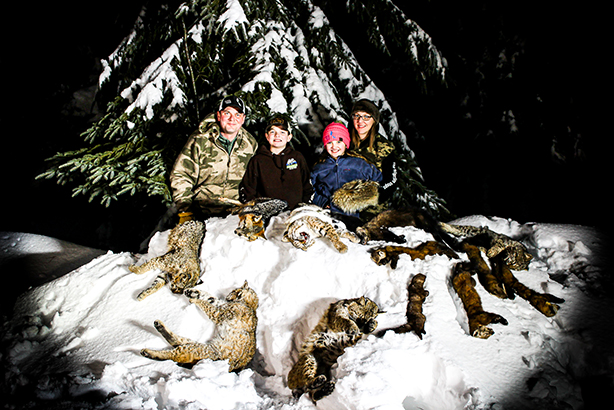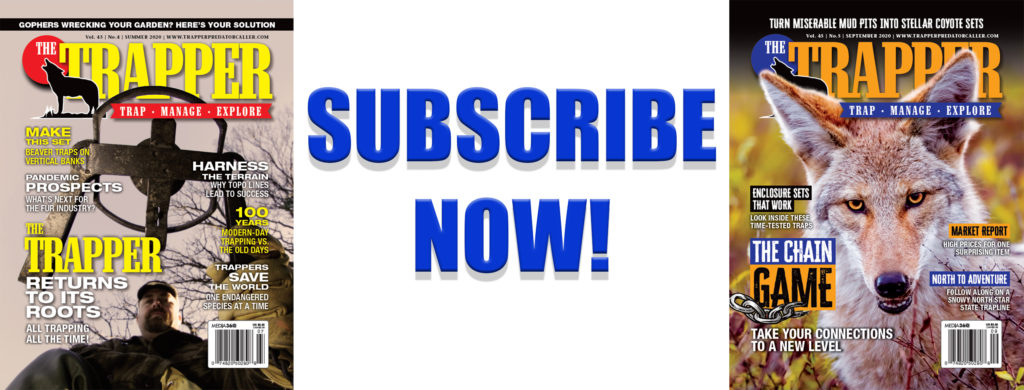The author traveled outside of his comfort zone to experience fisher and marten trapping firsthand.
By Jason Houser
Trappers are, without a doubt, some of the most adventuresome people that I have ever met. They are willing to go to many extremes to get their catches. Bad weather, busy schedules, injuries and illnesses are not enough to stop the hard-core trappers. And I might not be the most die-hard trapper around, but when I had the opportunity to leave my home in Illinois this past trapping season to travel to northern Minnesota to do some trapping, I did not hesitate.
There are not very many places in the country where a trapper can make sets for pine martens and fishers. Minnesota just happens to be one of those places. Unfortunately, Minnesota does not allow nonresidents to purchase trapping permits. But, just the opportunity to experience something that not many trappers will ever be able to do, was enough for my wife and I to jump on a plane the day after Christmas.
Leading up to this trip I had already been in contact with Adam Kane of Hibbing, Minnesota, about how to meet up with him and his family to film a couple episodes of “Trapping Across America TV,” which will air on the Pursuit Channel beginning in October. The plan was to meet up with Adam, his wife Kira and their two children, Wyatt and Kinley, to run their longline of about 100 miles. Our target furbearers were going to be martens, fishers and bobcats.
In Minnesota, each resident is allowed a combination of two fishers and/or martens. With four members of the Kane family with trapping permits, hopes were high to have a successful season. During the short window to trap martens and fishers (Dec. 21 to Dec. 29) a lot of things have to be in your favor if you have several permits to fill. The weather must cooperate, thieves cannot steal your catch and there must be a good population of furbearers in the area. Adam could not guarantee anything about the weather or thieves, but he assured me there were plenty of animals around.
Before I go any further with the story, I want to stop the naysayers. Adam is active with his children on the trapline. As young as they might be, they are out helping make their own sets, trudging through the deep snow to check their traps and even help in the fur shed with the skinning. This is absolutely not “I will take my kids along so I can fill more permits.” These kids are working right alongside their parents to make their own catches. We need to see more of this in the trapping community.
After stepping off the plane, we could only hope that we had packed enough clothes. The snow was a couple feet deep, the wind was howling and the temperatures were worse than terrible — especially compared to where we live in central Illinois. Remember when I said that weather was not enough to stop a die-hard trapper? Whether or not I am a die-hard trapper was about to be put to the test.
There is a three-day trap check law when using bodygrip traps in this area, so trappers have some discretion when checking their traps. But, with a limited amount of time for the Kanes to achieve their goal of limiting-out, and a winter blizzard forecasted for the last day of the season that could make the roads impassable, the decision was made to check the traps every day. It would be the best way to catch as many animals as possible in a short amount of time.
With many, many miles to cover and short days, we left the airport and headed straight to Adam’s house to change our clothes and start running the line. I quickly realized the best part of running a marten and fisher line was how close to the road the sets were placed.
If you did not alreadu know a set was in the area, a passing motorist would never notice the sets. Even Adam would use optics to check the traps from the road. That is how well they were concealed.
With about 70 sets to run there was not a lot of time to walk to each set. That’s why it is so important to basically trap from your truck. Plus, the deep snow and brutal temperatures make it tough to keep going for long before your body has had enough.
It was not long before Adam put his binoculars to his eyes and let us know they had scored on a fisher. Now, I was pretty excited, but the reaction of his young children was awesome. They both let out a screech and barely gave their dad time to put the truck in park before they bailed out and hit the waist-high snow as fast as their little legs would take them. Witnessing the thrill these youngsters had observing their catch gave me hope for the future of trapping.
As my old legs gingerly maneuvered through the snowdrifts, I made it to the set. Seeing my first fisher was something I will not forget. The children explained to me the set they used to make the catch as if they were seasoned trappers. I guess in a way they are.

Kinley was all smiles with her fisher. Photo credit Jason Houser.
This fisher belonged to Adam’s daughter and she could not have been happier. She eagerly pulled out her trapping license and notched out her catch. With the way things were going, the Kanes were going to get their limit in the three days they had remaining.
Just a few checks later, and a marten was dangling from a leaning tree set. As luck would have it, this set also belonged to Kinley and she was done for the season. I could tell she was excited to have caught a fisher and a marten, but I could also tell it was bittersweet for her to already be done trapping.
Continuing down the line we caught a couple ermine, a mink and even a skunk before one of our target animals made an appearance. This time, Wyatt was the lucky permit holder with a nice marten to tag. The excitement the young trapper showed was contagious and motivated the rest of us to keep trucking as the sun was getting lower in the western sky.
Our continued efforts were not rewarded with any more furbearers on the first day, but my wife and I had an awesome experience. After finding a nearby motel, we were ready for some rest before we did it all again the next day.
After waking up, we were reminded of the extreme conditions that many trappers face every day to run their lines. Over the years I have taken for granted the “mild” conditions that I trap in and gained a new respect for these trappers battling the elements on a daily basis to pursue the sport they love.
The second day was much like the day before. Our catch was sporadic with a couple marten here and there, with a bobcat or two thrown in for the Kane family. However, another young trapper had a little more success. Be sure to check out more about their bobcat trapping in an upcoming issue of The Trapper.
Joining us on our second day was a young trapper by the name of Gunnar. Gunnar is a young bull rider and due to a rodeo accident, he was on crutches after a recent surgery — but that did not stop him. Gunnar is new to the sport of trapping, and just recently passed his trapper education course. Before our arrival on the first day, Gunnar was out with Adam and made a few fisher and marten sets.
We had barely started checking sets when we pulled up to one of Gunnar’s and found a nice marten waiting for him. Hobbling through the deep snow, the enthusiasm he showed was a welcome sight. Just a few sets later was another one that Gunnar had placed, and another marten was waiting on him. After just one night of having sets out, the young trapper had filled both of his tags.
By the end of the day, our eyes were on the weather. Many of the roads we traveled on were well off the beaten path. With more than a foot of snow in the forecast, Adam made the decision to pull the line a day early as we ran the line. A couple marten were waiting for us, but no more fishers.
The decision to pull the line early did not come easy, as there are only so many days to trap, but it turned out to be the right choice. We woke up to Mother Nature unleashing all of her fury in her own beautiful way.
It was a great experience trapping with the Kane family. Every trapper has their own way of doing things and many trapping opportunities are not available to everyone. Learning about how the leaning pole and vertical sets can catch a furbearer I never thought possible was an amazing opportunity that I will never forget.
I was a little surprised to see that Adam was using a 110 conibear with the possibility of catching a powerful fisher. It turns out that the area where we were trapping has a few Lynx, which are protected. Due to the small Lynx population, certain measures have been put into place to help prevent accidental catches. Some of the restrictions include the trap size, the use of cubbies and having your traps set far enough back in the tubes.
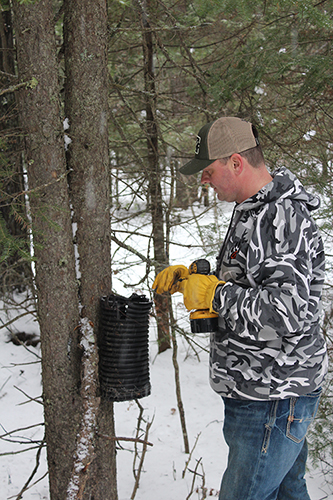
It does not take long for Adam to make a set and move on to the next. Photo credit Jason Houser.
Something else that I found interesting was the black tubing that Adam uses at his sets. After reading up on this style of trapping before heading out, I believed old newspaper boxes could also be a could choice. But, it was evident by seeing other trappers’ sets that many others feel the same way as Adam. As far as bait and lures go, a muskrat carcass served as bait and a little dab of a skunk-based lure was all that was needed to entice the animals into the traps.
Adam pointed out that the black tubing he was using was cheaper, easier to transport and work with. I have to agree with Adam. It took only a few seconds to secure a piece of tubing to the tree, set the trap, bait it and move on to the next one.
I will never forget this trapping experience and the hospitality of a family that genuinely loves trapping together and enjoys all things outdoor related. We read and hear about the numbers of active trappers rapidly declining. Seeing this family working together on the trapline gives me hope that our tradition will continue for generations to come.
